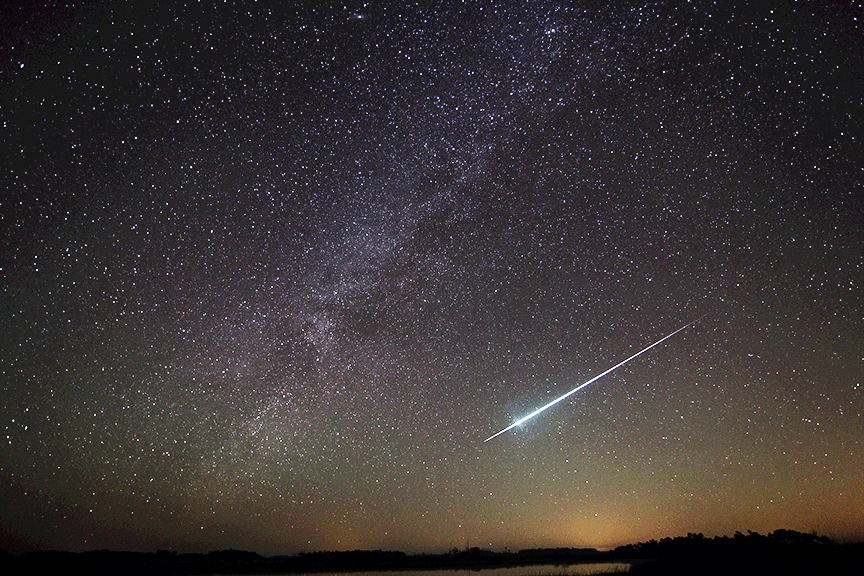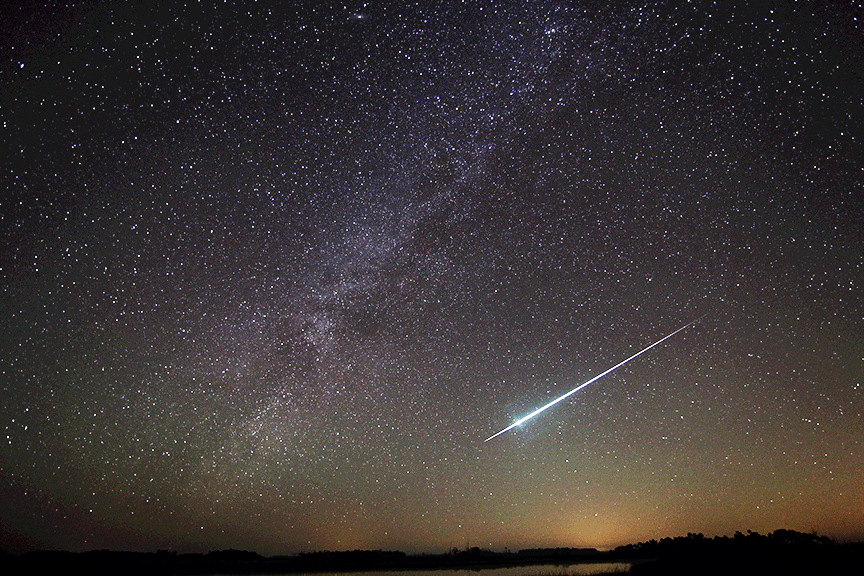Introduction:
Get ready for the grand finale of Ursid meteor shower in 2023! Gaze upwards, stargazers, because the year’s final light show is about to begin. The Ursid meteor shower, known for its twinkling “shooting stars,” has kicked off and promises a celestial spectacle in the December sky. As we approach the peak on the nights of December 21 and 22, let’s delve into what makes the Ursids unique and how you can witness this celestial extravaganza.

The Ursids Arrival:
From December 17th to the 26th, the Ursids will streak across the heavens, reaching their peak overnight on Thursday, December 21st, through Friday, December 22nd. This means you have two chances to catch the most dazzling display, just a week after the awe-inspiring Geminid shower.
A Celestial Encore:
The Ursid meteor shower promises a celestial show that coincides with December’s solstice. While it may not match the intensity of the recent Geminids. The Geminids may have boasted over 100 shooting stars per hour at their peak, the Ursids offer a more intimate performance. Expect to see around 10 shooting stars per hour during the climax, with the possibility of reaching up to 25, according to the American Meteor Society. So, even though it’s not a barn-burner like the Geminids, the Ursids bring their own enchanting charm.
Why You Shouldn’t Miss It:
This year’s Ursid peak coincides with the December solstice, adding a touch of cosmic synchronicity to the event. While unrelated, both phenomena stem from Earth’s tilt on its axis as it journeys around the sun. This tilt not only brings us the solstice but also allows our planet to encounter the dusty trails left behind by Comet 8P/Tuttle, the source of the Ursid meteor shower.
A Cometary Mystery:
Speaking of 8P/Tuttle, this celestial vagabond takes a leisurely 13.6 years to complete its solar orbit. It was last seen in the inner solar system in 2021 and won’t grace us with its presence again until 2035. In 2008, scientists managed to peek at 8P/Tuttle using the now-defunct Arecibo Observatory’s immense radio dish. Guess what they found? This cosmic wanderer is about 2.8 miles (4.5 kilometers) in diameter and boasts a peculiar peanut-like shape!
When to Catch the Ursid Meteor Shower:
To spot the Ursid meteors, head north and locate the constellation Ursa Minor, also known as the Little Dipper. These stars spiral around Polaris, the North Star, so keep your eyes fixed on that heavenly landmark. Since Ursa Minor is a circumpolar constellation (visible all night long in the Northern Hemisphere), you can start your meteor hunt as soon as darkness falls. However, our southern hemisphere friends might be out of luck this time around, as the Ursids won’t be visible from their vantage point.
A Few Helpful Tips:
While the peak night boasts the highest concentration of shooting stars, a waxing gibbous moon (The Waxing Gibbous phase is when the lit-up part of the Moon grows from 50.1% to 99.9%) might play spoiler, casting its silvery glow across the sky. To maximize your meteor-spotting potential, bundle up some warm layers against the December chill, find a dark spot away from city lights, and be patient. Give your eyes about an hour to adjust to the darkness before expecting a celestial symphony. You can carry your binoculars and telescopes at home although your naked eyes are the best tools for this cosmic adventure.
Conclusion:
So, dear stargazers, as the Ursids grace our night sky, set aside some time for stargazing, embrace the chill, and let the magic of “shooting stars” captivate you. Wishing you clear skies and wide eyes for a memorable Ursid meteor shower experience!
#UrsidMeteorShower #Ursids #Ursids2023 #StargazingAdventure #NightSkyMagic #DecemberSkyGazing #UrsaMinorMagic #SkyWatchersGuide #MeteorShowerSeason
For more captivating moments and updates, CHECK OUT-
- Get more info. on this topic visit- American Meteor Society
- For Space Enthusiasts- NASA’s Official X account
- Check out our latest insights on- NASA Christmas Tree In Space
- Check out our latest insights on- Solar Flare Blast! Radio Blackoutsre
